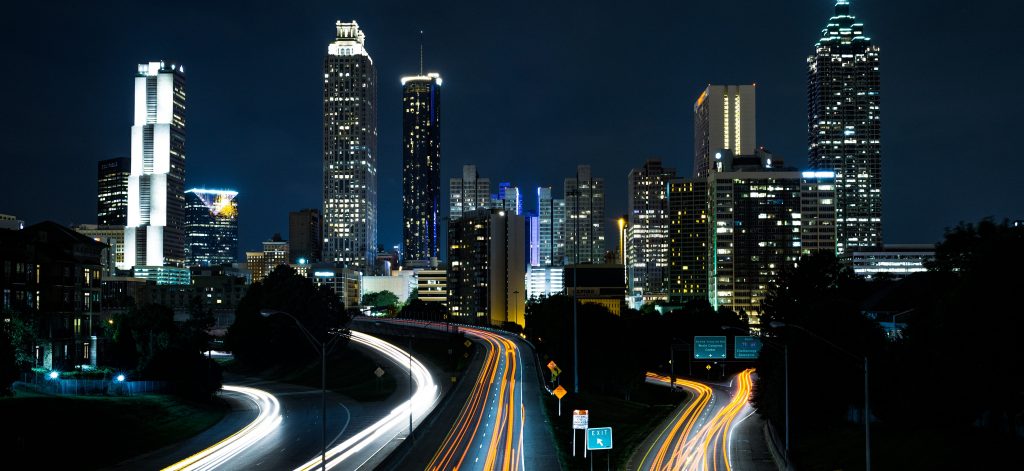Autonomous vehicles are much closer to hitting the market than many realize, but while manufacturers and technologists try to fine-tune the machines, governments are fine-printing the regulations that will legislate the automobiles of the future.
Testing sites in Pittsburgh, Boston, Washington, D.C., and other prominent cities in America have already put driverless cars on the road – all with the cooperation and endorsement of local officials. State and national governments are also hastening to welcome autonomous vehicles, but before their widespread adoption, safety is priority No. 1.
“It really is rarely – if ever – safe enough,” Karina Ricks, Director of Mobility and Infrastructure for the city of Pittsburgh, said.
In Pittsburgh, autonomous vehicles operate and are tested on a now-famous stretch of roadway – right in the heart of the booming technology sector downtown. The driverless cars need two testers at all times, per regulations.
Pedestrians along the driverless cars’ route have familiarized themselves with the presence of the vehicles. Some pedestrians, Ricks said, know that the vehicles are driving slowly enough and are responsive enough to stop in close proximity, so they will cross the road ahead of autonomous vehicles regardless of walkways and traffic laws.
“What keeps us on the sidewalk is really a fear of bad drivers,” Ricks said, remarking that peoples’ response to driverless cars could cause new urban planning issues and legislation around roads.
Before autonomous vehicles are largely incorporated into real-world situations, infamous malfunctions that have come up in testing will have to be addressed. Governments will also have to prepare the policies and practices to manage societal responses to these vehicles – such as pedestrian disregard for traffic laws.
Would roads be built underground? Will crosswalks become pedestrian bridges? Will bike lanes have to be painted in everywhere? The way that society operates around automobiles could fundamentally change with the proliferation of driverless cars, and these are the issues that every government will have to rule on going forward because of how autonomous vehicles operate.
Autonomous vehicles use available maps to guide their journey, sensors to develop a picture of nearby surroundings and hard-coded rules to maintain a standard of driving. Software then computes all of the inputs and, using predetermined formulas, calculates the correct speed, direction and course of action.
While the formulas are exact, the cars’ read of the external road can be much more mercurial. Because of misinterpretations that lead to the incorrect programmed response, a car could swerve into traffic to avoid a pothole or fail to halt at an obscured stop sign on the side of the road.
“It’s all of those components that are supporting getting AVs [autonomous vehicles] to an actual place,” Jeff Marootian, Director of the District Department of Transportation (DDOT) in Washington, D.C., said.
Therefore, as important as the cars themselves is the infrastructure that governments will have to build out to allow for driverless vehicles. Signs will have to be visible, lanes will have to be clear and roads will have to be better to avoid driverless cars misinterpreting inputs.
On top of improving driving conditions, governments will have to bolster their networks to allow for the necessary information-sharing, Marootian said. Wireless 4G networks paved the way for ride-sharing services, and now, 5G will allow for driverless cars to communicate with other cars and process the split-second decisions that they will have to make in unpredictable, real-world environments.
The hope is with the infallible programming of driverless cars, accidents will become a pain of the past. Crucially, however, crashes will still exist – with the car responding to circumstances by choosing the route of least harm.
“For autonomous vehicles, there’s no such thing as an accident,” Ricks said. “It’s a crash. It’s programmed.”
That leads to some difficult decisions for lawmakers and machinists. A famous ethics hypothetical called the “trolley dilemma” imagines a situation where a crowded streetcar is barreling ahead and suddenly a person jumps in front onto the tracks. The streetcar can either run off the tracks, risking injury and death to many or stay on the tracks, guaranteeing the death of one.
These decisions have always been up to individual drivers, who in a brief moment evaluate the circumstances. With autonomous vehicles, however, this same case would be down to an impartial, unemotional and absolute computer calculation. Such hypotheticals, though, are just part of the story.
“It’s certainly appropriate to focus on what could go wrong, but it’s also important to focus on the potential safety benefits,” said Ted Boll, Senior Advisor for Economic Policy within Research and Technology for the U.S. Department of Transportation.
While worst-case scenarios are often brought up for driverless cars, the vehicles have lifesaving potential that, with the right development and regulation, offsets and exceeds any costs. In a foretold world of driverless cars, drunk driving and distracted driving deaths are no more. More cars can safely exist on the road, and traffic can be reduced.
Ricks, Boll and Marootian spoke at AI World Government, a conference covering government management and regulation of artificial intelligence technologies. AI World will also host its conference and expo October 23-25 in Boston.
Photo by Joey Kyber on Unsplash
